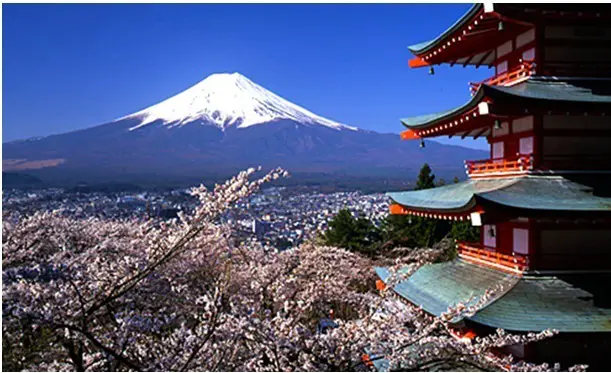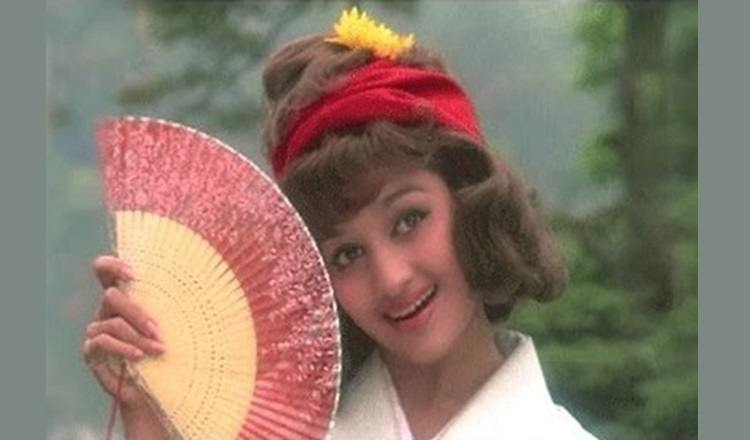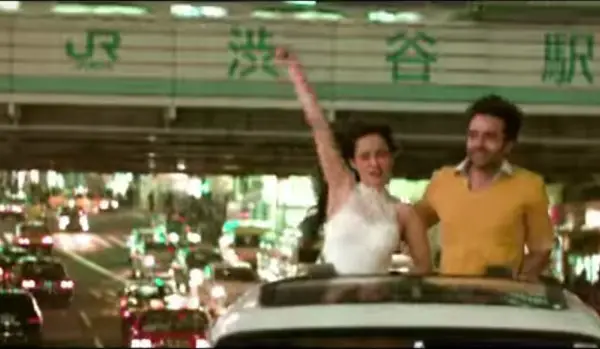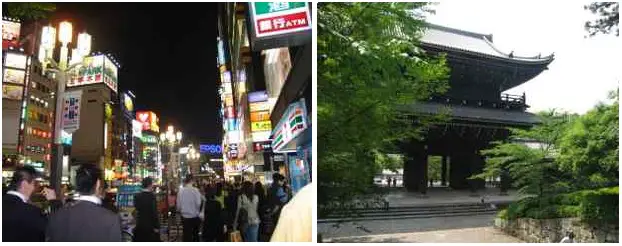
Japan is one country where Bollywood biggies are hoping to exploit the opportunity that exists, thanks to the popularity of Indian movies among Japanese.
Are Indian Films Popular There?
Rajinikanth’s 1995 film “Muthu, Dancing Maharajah” was a run-away success in Japan, as per Kyoko Dan, a Kobe-based movie publicist who works with several Asian producers.
One of the reasons for that was obviously the “Action” that is associated with any Rajni movie. And by those standards, as per Dan, most Bollywood films are not really “manly”.
So for most Japanese, Indian films mean “Muthu”, and they expect the same level of fireworks and action in the movies.
However, Bollywood has taken notice of this existing opportunity, and have started taking the necessary steps to tap the Japanese market, which till recently was restricted to only Tamil films, and that too starring super star Rajinikanth.
Bollywood may not have explored Japan for shooting their films yet, but that could very well change in the near future! Post ‘Love in Tokyo’, not many significant movies have been shot there, but a lot of directors/filmmakers have this place in their minds.

Japanese Entertainment Scene
Japanese audiences are charmed by the emotional drama, dance and song sequences which is found in most Indian films.
So even though Hollywood films dominate the entertainment market in Japan, distribution companies are hopeful that Bollywood films will be able to get a sizeable share in the future.
Looking at the number of screens that are being offered to Bollywood films, it looks as if Japan is going to be a bigger market than Australia.
Currently there is virtually zero market for Indian films and filmmakers in the country. Even Rajinikanth’s popularity in Japan was only a phase in Japan, that now seems to have faded. As things stand, Japan has no knowledge of Bollywood or Bollywood stars.
But the good thing is that most see this as an opportunity to bring the two countries together, via Bollywood of-course.
– Bollywood actress Katrina Kaif lived in Japan for a few years during her growing up years.
– In Japan, Rajinikanth’s 1995 film ‘Muthu, Dancing Maharajah’ was a huge hit.
– Hollywood films like Inception, The Wolverine & The Last Samurai have been shot in Japan
– Bollywood actress Evelyn Sharma, along with Miss World Japan 2015, Chika Naka-gawa, will appear in a 2017 calendar, as part of a project to attract more Indian tourists to Japan.
– Tokyo will be hosting the Olympic and Paralympic Games in 2020.
Although Japan and India seem to be similar (spiritually), the two countries know little about each other. That is where movies can bridge the gap. Through movies, people in both the countries will get to know each other much better, and hopefully India & Japan can share common entertainment interests through co-productions.
With several south-Indian movies being shot in Japan, its high-time that even Bollywood start exploring the land of the rising sun.
Does it Make Sense to Film There?
Biggies here in India believe that Japan is more of a fad-oriented market, and most producers are toying with the Idea of filming in Japan.
Kabir Khan (Director of Ek Tha Tiger) is actually developing a script about the Indian Army’s alliance with the Japanese military, during World War II, to fight the British Army.
And though, the movie doesn’t have to be shot in Japanese locations, it doesn’t mean they can’t shoot in Japan. The producers are in contact with the regional film commissions in the Kansai region to discuss such possibilities, since most modern Bollywood films demand foreign settings.
Movies Filmed in Japan
Jackky Bhagnani & Neha Sharma shoot in japan for Youngistaan

The song ‘Tanki hai Hum’ from Youngistaan was shot in Japan. It was shot on the streets of Japan in a guerilla fashion, with no formal equipment setting, lights, sets or locations. as you can see from the video, not many Japanese were really aware whether a shoot was actually happening on their streets.
Not many are aware that Katrina Kaif lived in Japan for a few years during her growing up years.

Here’s Hansika sharing her shooting experience in Japan for a South-Indian movie. Hansika has worked in several hindi films and television serials (was quite popular as a child-artiste)
‘Love in Tokyo’ (1966) was shot primarily in Japan at locations including Tokyo, Tokyo International Airport and Hiroshima.
Regarding the plot, its entertaining (with Mehmood in several avatars), fluffy like most popular films in the 60s, with the usual rona-dhona (without much logic to it). For instance, why should Asha Parekh donate both her eyes? She could offer one eye and then both would be one-eyed. Besides, which sane surgeon would accept eyes from a living person? But then its an old hindi film…right?.
However, almost all the songs from that movie were super-hits. Here are a couple of them.
‘Love In Tokyo’ title track
‘Sayonara’ track from the movie ‘Love In Tokyo’
Educating the Audience
Nikkatsu are also taking all the efforts to educate the Japanese crowd about Indian films.
One of their strategies is to sell tickets to all four films as a package so that Japanese audiences can make a commitment to find more about the range and different styles of Bollywood film.
Here’s a video showing Japanese dancing on Bollywood songs:
Bollywood-style commercial for snack company goes viral in Japan: This commercial shows a young boy promoting curry-flavored rice crackers while showcasing his incredible dancing skills despite being adorably plump.
There is no doubt that Bollywood is popular in several foreign countries. Indian filmmakers are now also seeing Japan as an important market where Indian movies can do well, considering the similarities in cultural values. It would be interesting to see how Indian movie makers can exploit this opportunity that Japan presents.
Japan Tourism
As far as tourism is concerned, Japan may not yet be on the radar of the Indian tourist (though many are aware that it can be an expensive place to visit). But Japan happens to be one of the most popular travel destinations in the world.
Its a unique place where you could be immersed in Japanese history and culture one day, and get a glimpse of their amazing technological advancements the next day.
Japan, also known as the ‘land of the rising sun’, is a country of surprising contrasts where you see the country embrace the most modern & latest technology, and at the same time you can also see the Japanese culture and traditions very much intact. You can see modern architecture (especially in Tokyo) and also the beautiful historic buildings, temples, and homes.
The best part about living in this country is that you could be snowboarding, mountain biking, hiking, or deep sea diving, all no more than 2 hours by train.
The natural beauty of Japan can be seen throughout the year. Besides, Japan has the lowest crime rate in the world, making it ideal for travelers.
Capital: Tokyo. Dialing code: +81. Currency: Yen
When on holidays, try to include at least one night at a Ryokan (traditional Japanese inn / guest house), where you eat traditionally, and sleep on a futon – a thin mattress on the floor, as this is a wonderful way to experience the Japanese culture. Besides, Ryokan’s can provide inexpensive accommodation.
Top Tourist Attractions in Japan:
- Hiroshima Peace Memorial
- Jigokudani Monkey Park near Nagano
- Kiyomizu-dera Buddhist temple in Eastern Kyoto
- Himeji Castle (best existing example of Japanese castle architecture)
- Great Buddha of Kamakura
- Arcades in Osaka
- Kiyomizu-dera temple in Kyoto
- Todaiji Temple (world’s largest wooden building)
- Tokyo Tower (inspired by the Eiffel tower)
- Tokyo Imperial Palace (home of the Emperor of Japan, Museum)
- Mount Fuji (highest mountain in Japan)
- Kinkaku-ji or the Temple of the Golden Pavilion in Kyoto
This is what one of the visitors had to say:
Golden Pavillion , Kyoto, is very overvallued. You can see it from long distance. Entrance fees high. My tips: 1. Tokyo; 2. Fuji-Hakone; 3. KANSAI: Kyoto; Nara; Osaka (castle-alternat. Himeji); 4. Hiroshima and Miyajima. My last trip: Tokyo – Okinawa (ANA) – Kagoshima (JRPass) – Miyazaki/Aoshima – Kyoto – Osaka – Takushima (ferry)- Osaka – Nara – Tokyo.




